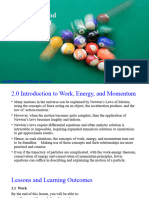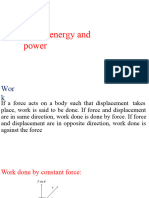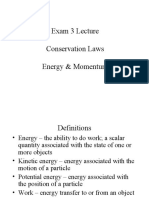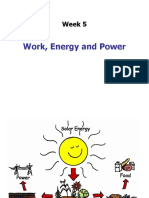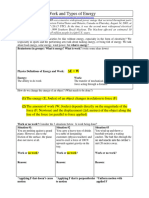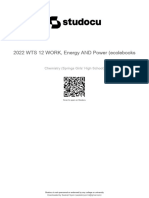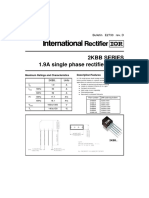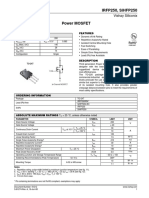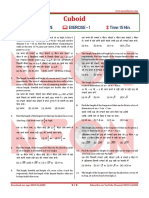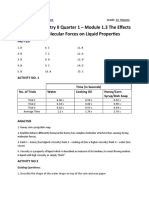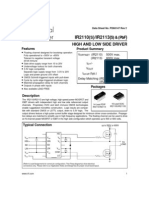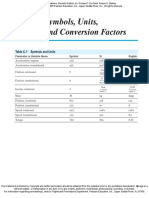0% found this document useful (0 votes)
29 views42 pagesPre Lecture 8
The document covers the principles of conservation laws, focusing on energy and its various forms, transformations, and transfers. It discusses the historical context of energy conservation, definitions of work, kinetic and potential energy, and the conservation of energy in isolated and non-isolated systems. Additionally, it introduces the concept of power as the rate of energy transfer.
Uploaded by
SamriddhiCopyright
© © All Rights Reserved
We take content rights seriously. If you suspect this is your content, claim it here.
Available Formats
Download as PDF, TXT or read online on Scribd
0% found this document useful (0 votes)
29 views42 pagesPre Lecture 8
The document covers the principles of conservation laws, focusing on energy and its various forms, transformations, and transfers. It discusses the historical context of energy conservation, definitions of work, kinetic and potential energy, and the conservation of energy in isolated and non-isolated systems. Additionally, it introduces the concept of power as the rate of energy transfer.
Uploaded by
SamriddhiCopyright
© © All Rights Reserved
We take content rights seriously. If you suspect this is your content, claim it here.
Available Formats
Download as PDF, TXT or read online on Scribd
/ 42









